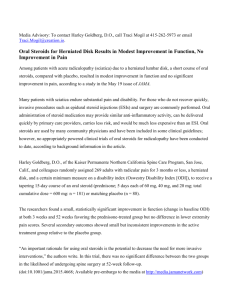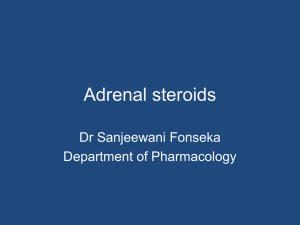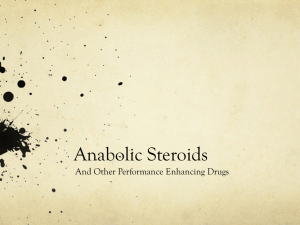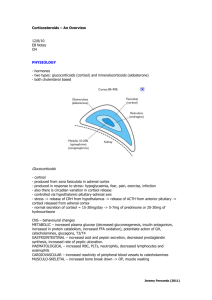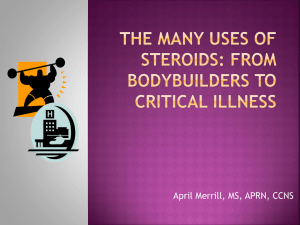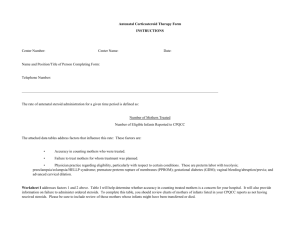5.21.10 Crocker Steroids for persistent ARDS
advertisement
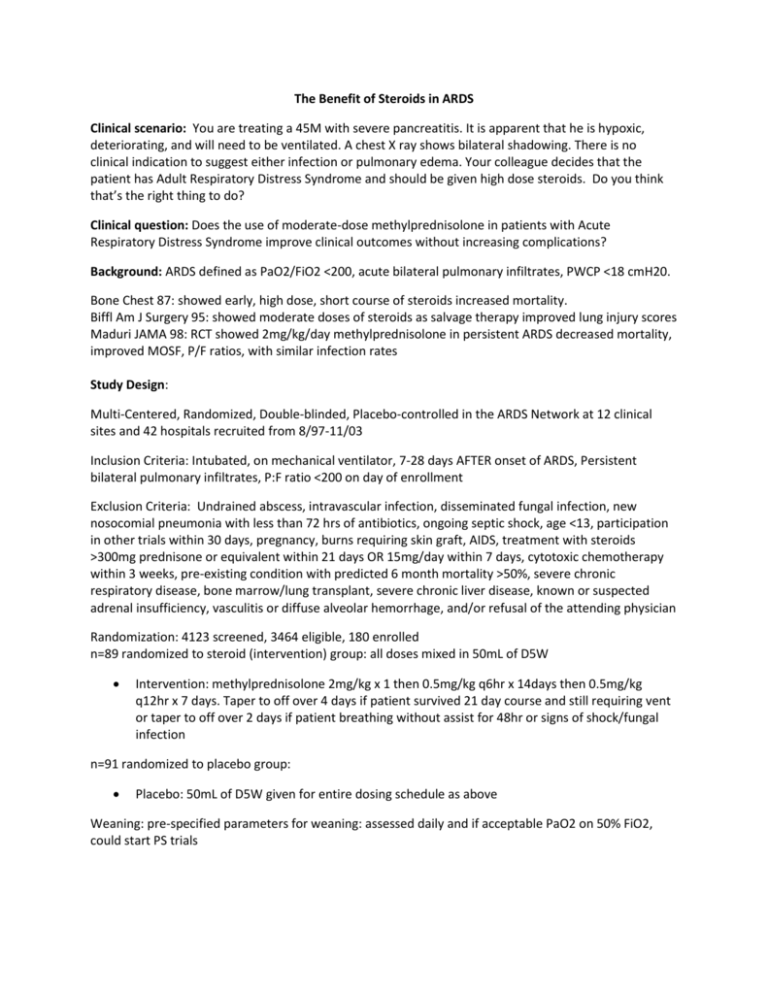
The Benefit of Steroids in ARDS Clinical scenario: You are treating a 45M with severe pancreatitis. It is apparent that he is hypoxic, deteriorating, and will need to be ventilated. A chest X ray shows bilateral shadowing. There is no clinical indication to suggest either infection or pulmonary edema. Your colleague decides that the patient has Adult Respiratory Distress Syndrome and should be given high dose steroids. Do you think that’s the right thing to do? Clinical question: Does the use of moderate-dose methylprednisolone in patients with Acute Respiratory Distress Syndrome improve clinical outcomes without increasing complications? Background: ARDS defined as PaO2/FiO2 <200, acute bilateral pulmonary infiltrates, PWCP <18 cmH20. Bone Chest 87: showed early, high dose, short course of steroids increased mortality. Biffl Am J Surgery 95: showed moderate doses of steroids as salvage therapy improved lung injury scores Maduri JAMA 98: RCT showed 2mg/kg/day methylprednisolone in persistent ARDS decreased mortality, improved MOSF, P/F ratios, with similar infection rates Study Design: Multi-Centered, Randomized, Double-blinded, Placebo-controlled in the ARDS Network at 12 clinical sites and 42 hospitals recruited from 8/97-11/03 Inclusion Criteria: Intubated, on mechanical ventilator, 7-28 days AFTER onset of ARDS, Persistent bilateral pulmonary infiltrates, P:F ratio <200 on day of enrollment Exclusion Criteria: Undrained abscess, intravascular infection, disseminated fungal infection, new nosocomial pneumonia with less than 72 hrs of antibiotics, ongoing septic shock, age <13, participation in other trials within 30 days, pregnancy, burns requiring skin graft, AIDS, treatment with steroids >300mg prednisone or equivalent within 21 days OR 15mg/day within 7 days, cytotoxic chemotherapy within 3 weeks, pre-existing condition with predicted 6 month mortality >50%, severe chronic respiratory disease, bone marrow/lung transplant, severe chronic liver disease, known or suspected adrenal insufficiency, vasculitis or diffuse alveolar hemorrhage, and/or refusal of the attending physician Randomization: 4123 screened, 3464 eligible, 180 enrolled n=89 randomized to steroid (intervention) group: all doses mixed in 50mL of D5W Intervention: methylprednisolone 2mg/kg x 1 then 0.5mg/kg q6hr x 14days then 0.5mg/kg q12hr x 7 days. Taper to off over 4 days if patient survived 21 day course and still requiring vent or taper to off over 2 days if patient breathing without assist for 48hr or signs of shock/fungal infection n=91 randomized to placebo group: Placebo: 50mL of D5W given for entire dosing schedule as above Weaning: pre-specified parameters for weaning: assessed daily and if acceptable PaO2 on 50% FiO2, could start PS trials Outcomes: Primary Outcome: 60 day mortality. Secondary Outcomes: number of vent-free days in first 28 days, number of days w/out organ failure in first 28 days, number of infections complications during first 28 days, and markers of inflammation and fibroproliferation on study day 7. Assessment of results: Patients receiving steroids had significantly reduced lung inflammation, better respiratory compliance, improved oxygenation, more vent-free days (6.8 days in placebo vs 11.2 in steroid (p<0.001))as well as cardiovascular failure-free days (17.9 in placebo vs 20.7 in steroid (p=0.04)) during the first 4 weeks. However, 60 and 180 day mortality rates in each group were the same (29.2% vs. 28.6% and 31.5% vs. 31.9%, steroids vs. placebo) with RR being close to 1. There were no differences in infectious complications (43/30 in placebo vs 25/20 in steroids (p=0.14)), but there was a higher rate of neuromuscular weakness in the steroid group (0 vs 9). In the subset of patients enrolled at least 14 days after the onset of ARDS, steroids appeared to have a significantly worse 60 and 180 day mortality. 1. Are the results valid? Yes, there was randomized assignment of the patients to both treatment and placebo arms. Comparisons were done according to the intention to treat principal. However there are several criticisms of the study. Only 180 patients resulting in limited power to detect mortality difference Large number of exclusion criteria. Resulted in only 5% of eligible patients being enrolled. Conducted over time when changes were being made in ICU practice such as low tidal volume ventilation, steroids for refractory shock, and tight glucose control. These new practices may have obscured a beneficial steroid effect. Treatment arm contained more females than placebo arm. Question their randomization techniques. Also question whether there are gender differences in steroid responses. 2. Will the results help with my patient care? We see many patients with ARDS, however almost never do we see a patient here who would meet the criteria for this study. This study shows that prolonged low dose steroids are not beneficial for the treatment of late ARDS and may actually be harmful for patients when initiated more than 2 weeks after the onset of ARDS.
